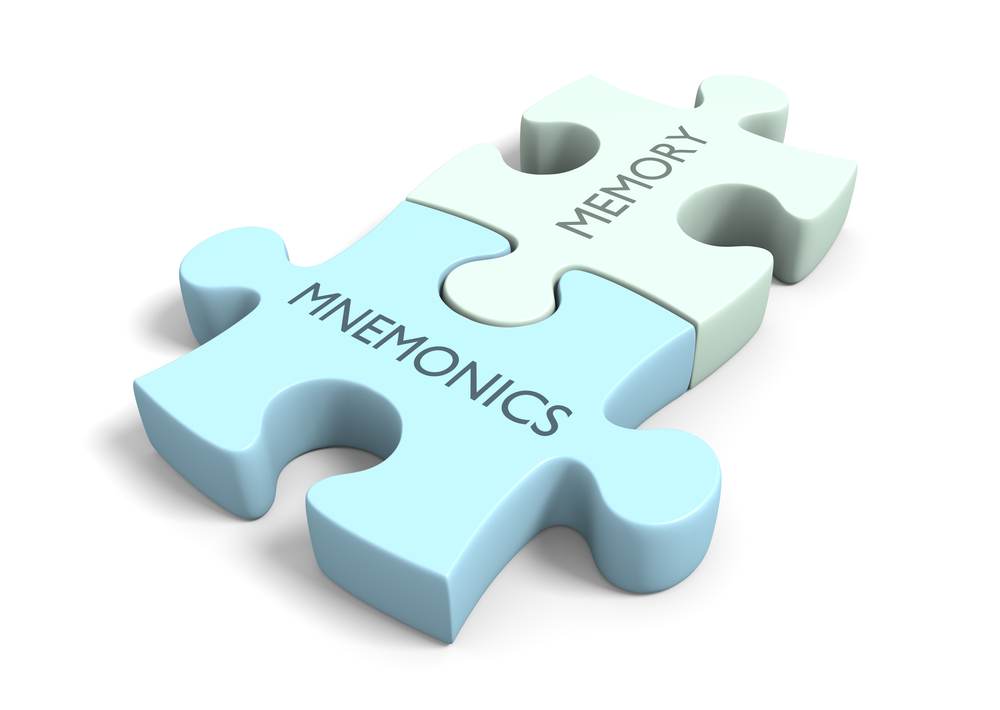Spatial awareness Normal Math Worksheets for Ages 4-7
10 filtered results
-
From - To
Enhance your child's learning experience with our Spatial Awareness Normal Math Worksheets, designed specifically for ages 4-7! These engaging worksheets promote critical thinking and cognitive skills essential for early development. Catered to young learners, they feature a variety of fun activities that incorporate shapes, directions, and patterns, helping children understand their environment. Each worksheet is designed to stimulate spatial reasoning through interactive tasks that encourage exploration and creativity. Perfect for homeschooling or supplementing classroom learning, our worksheets provide a chance for parents and educators to guide children in grasping essential math concepts while ensuring they enjoy the journey. Start building foundational skills today!
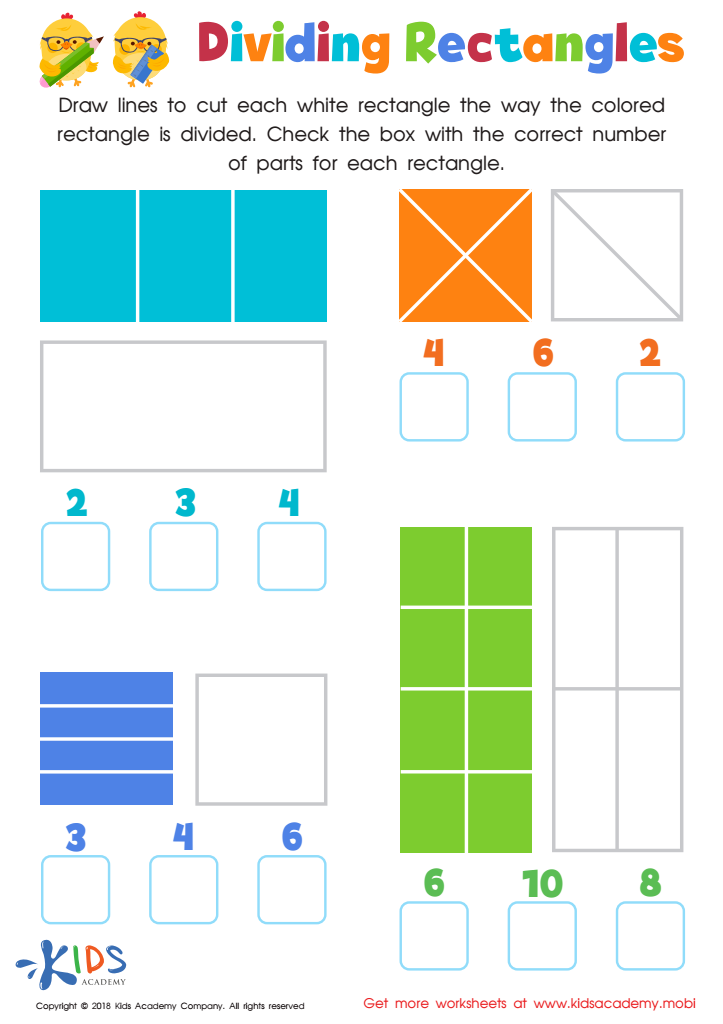

Dividing Rectangles Worksheet
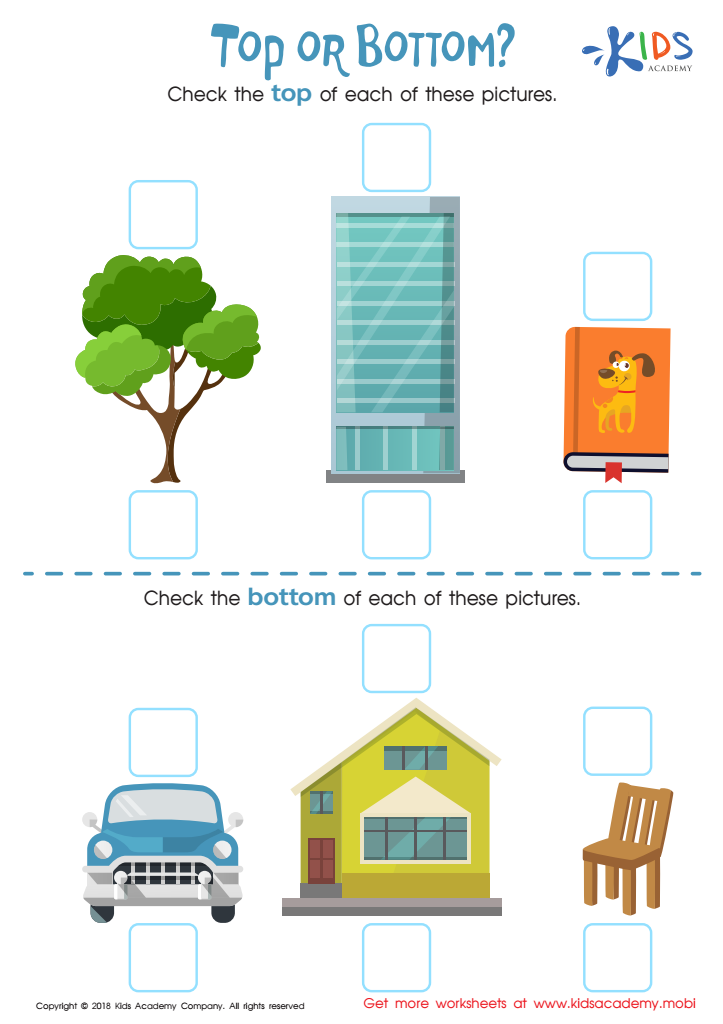

Top or Bottom Worksheet
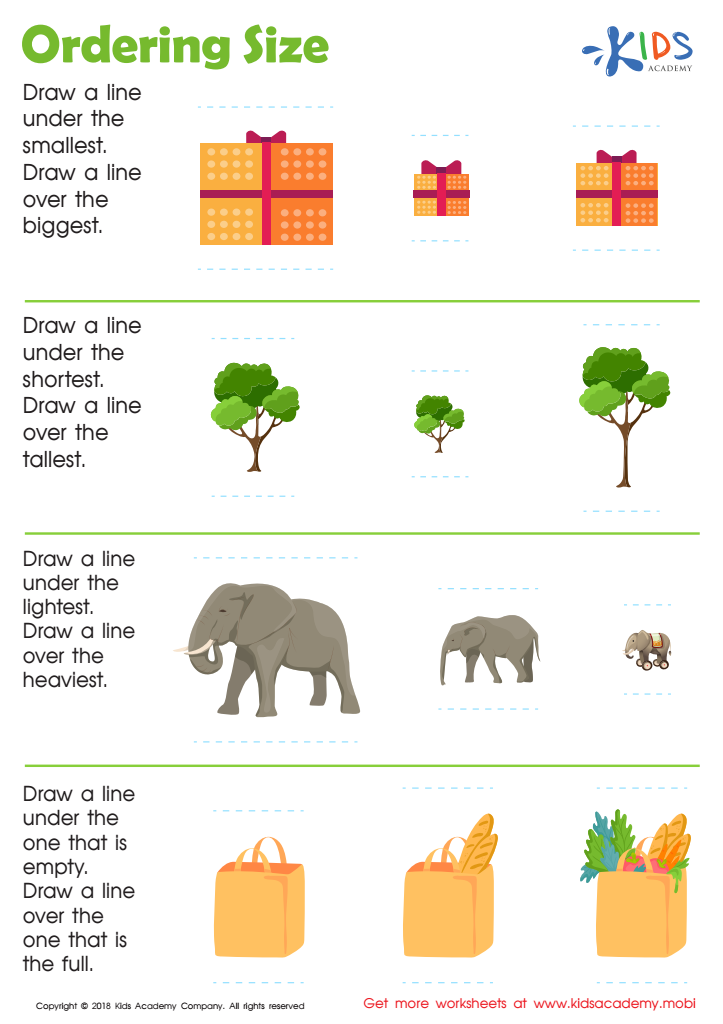

Ordering Size Worksheet
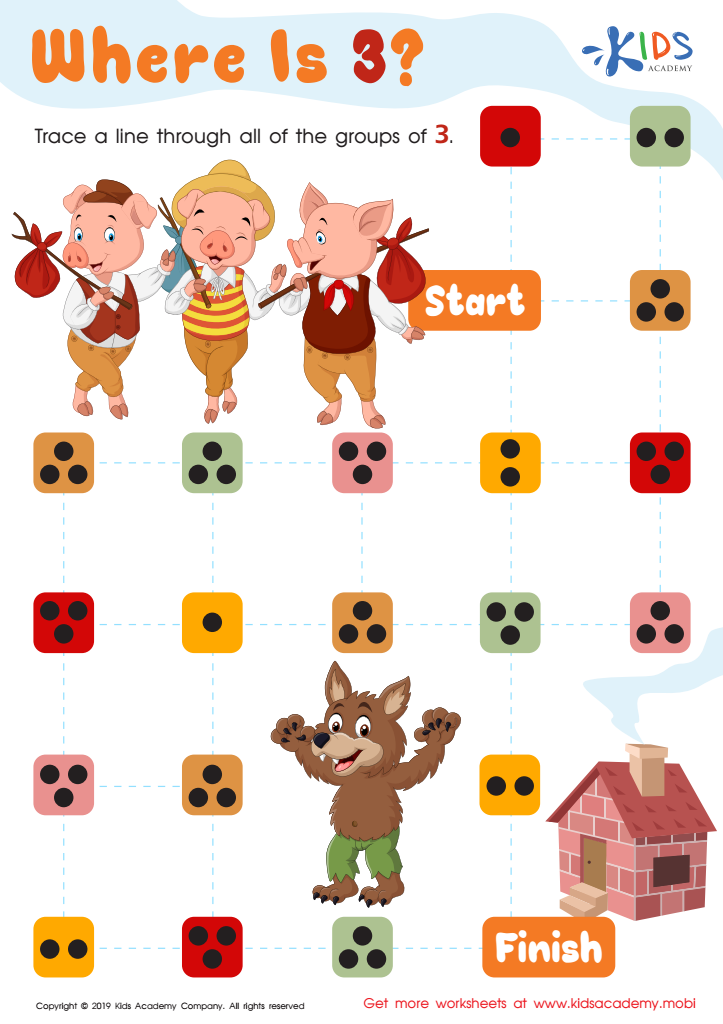

Where Is 3? Worksheet
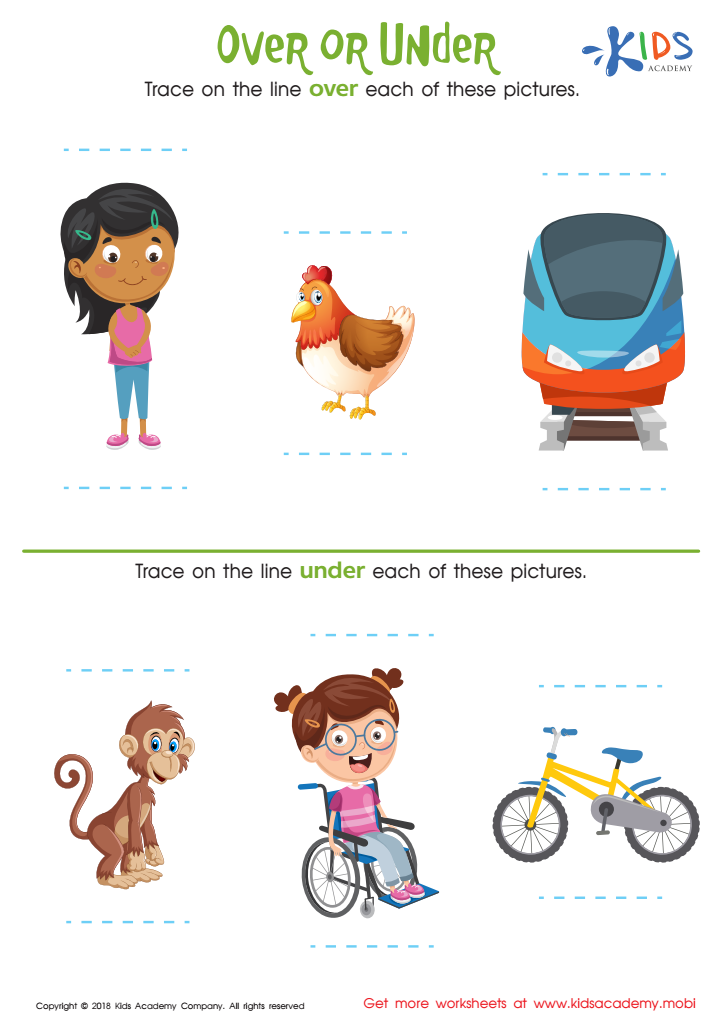

Over or Under Worksheet


Three–Dimensional Shapes: Cylinder Worksheet


Skip Counting by 10 Through Our Community Worksheet


In Front or Behind Worksheet
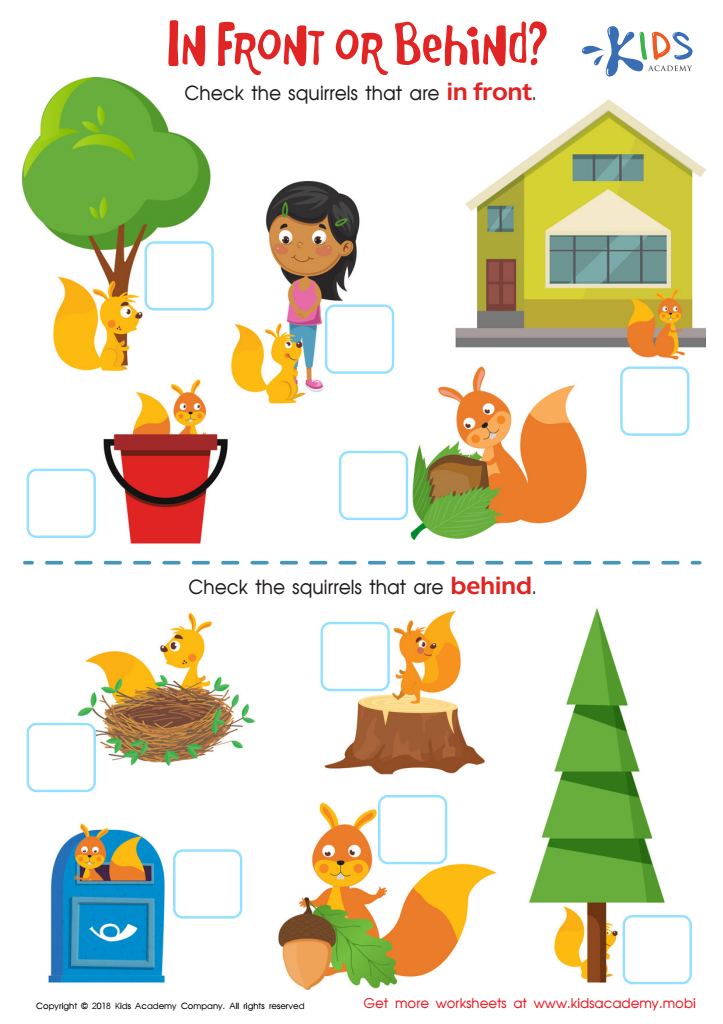

In Front or Behind: Part 2 Worksheet
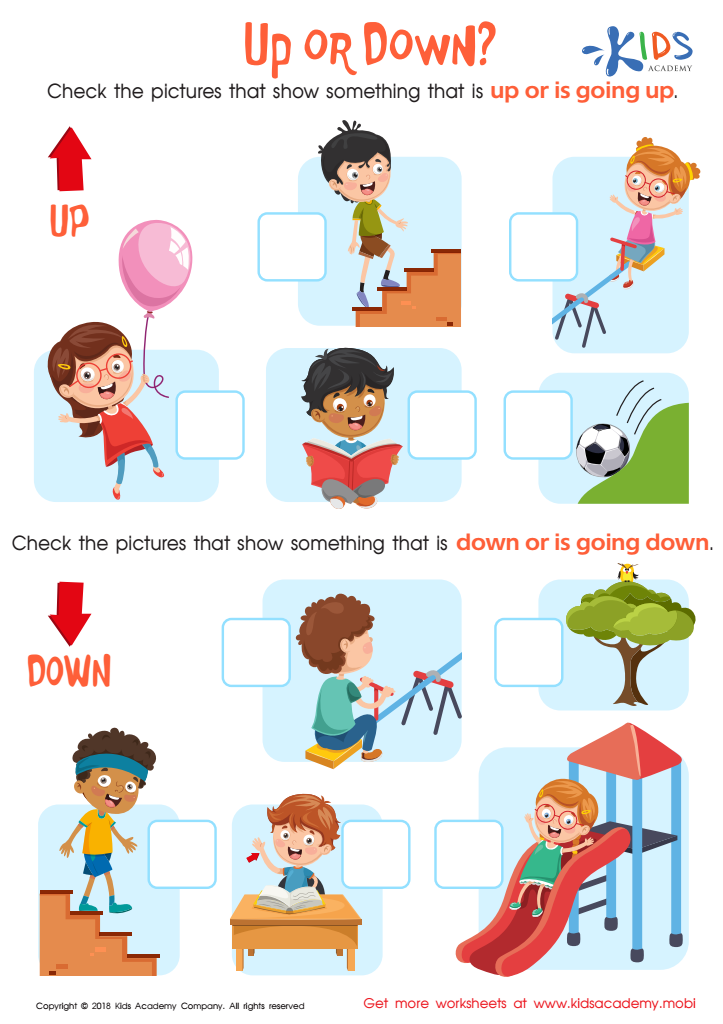

Up or Down Worksheet
Spatial awareness plays a crucial role in children's mathematical development from ages 4-7. During this stage, children are naturally curious and start to explore their environments. Spatial awareness—understanding how objects relate to one another in space—underpins various mathematical concepts such as shape recognition, spatial reasoning, and problem-solving skills.
By fostering spatial awareness, parents and teachers lay a strong foundation for future learning, particularly in geometry and measurement. For instance, children learn to visualize and manipulate shapes, which enhances their ability to understand more complex mathematical ideas later, such as fractions or graphs.
Engaging children in activities that develop spatial awareness—like puzzles, building with blocks, or outdoor exploration—stimulates their cognitive abilities. This not only enhances their mathematics skills but also contributes to critical thinking, creativity, and adaptability. These skills are vital for success in numerous fields, including science, engineering, and technology.
Moreover, children with strong spatial reasoning are often more confident in their mathematical abilities, leading to a positive attitude toward math as they progress in their education. Therefore, parents and teachers should prioritize spatial awareness activities to ensure children excel in both mathematics and life skills.
 Assign to My Students
Assign to My Students







